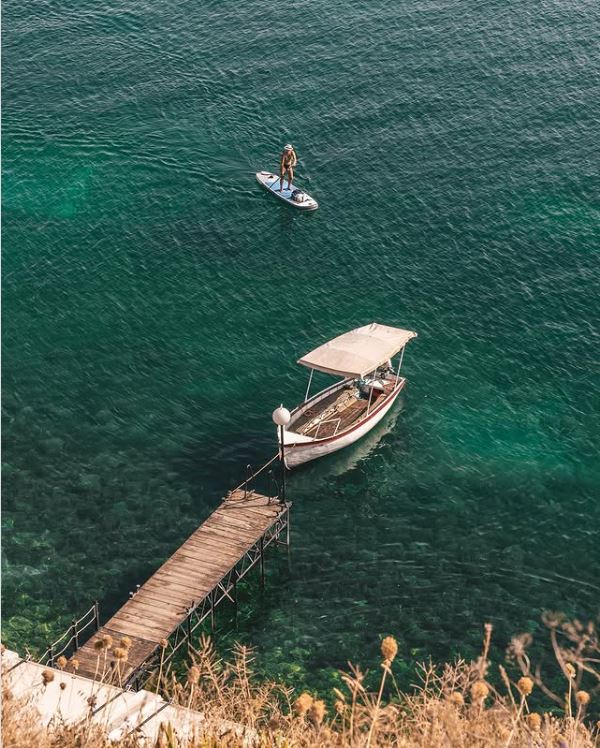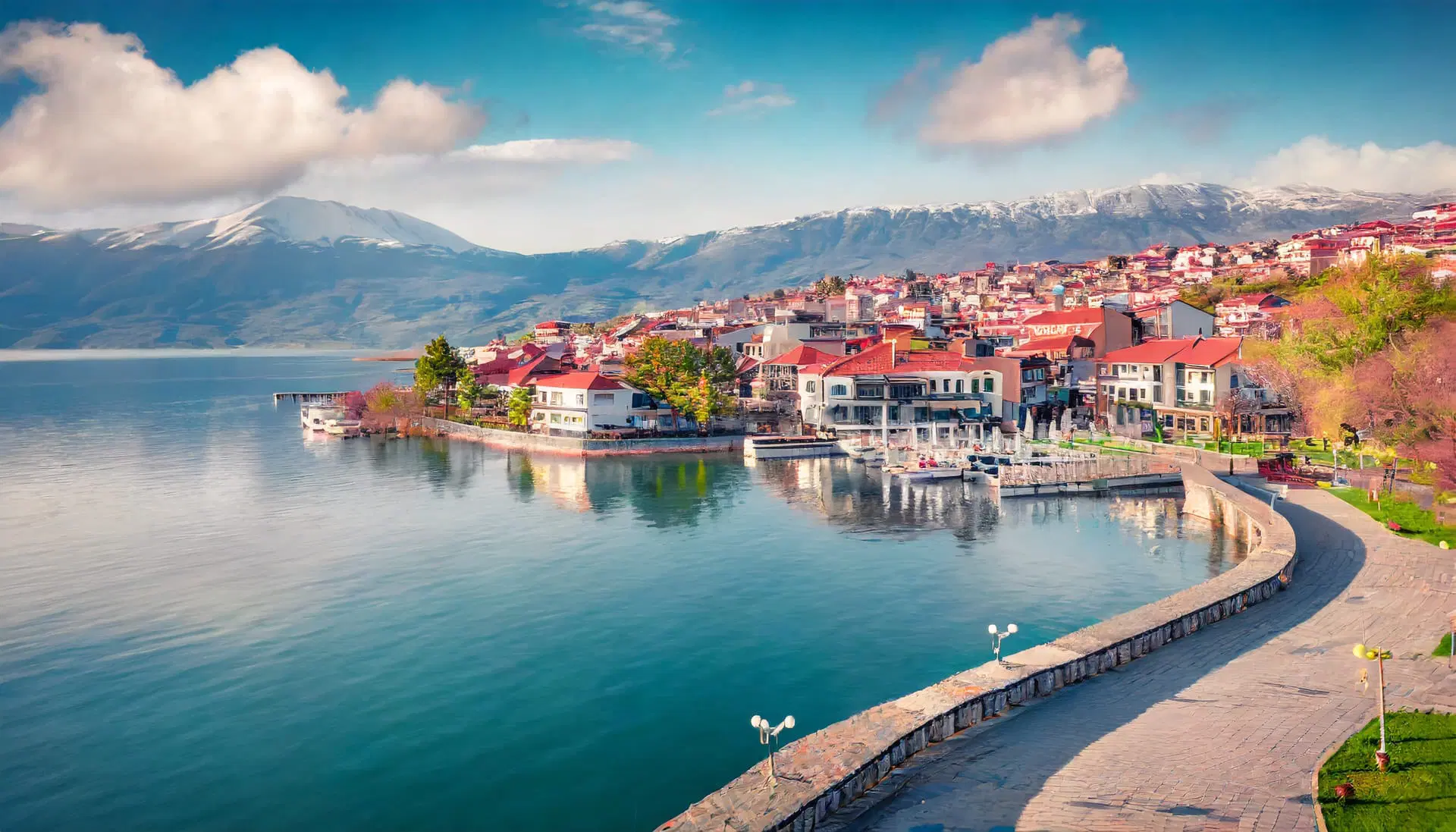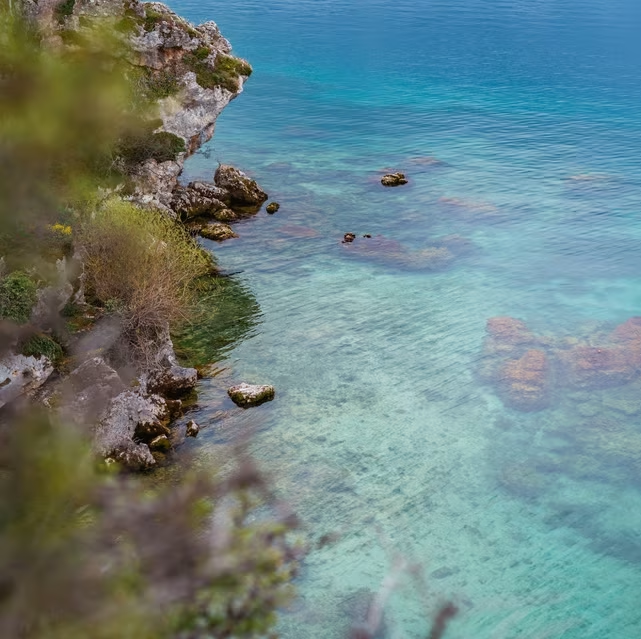Introduction: Discovering Ohrid Lake
*Ohrid Lake*, a magnificent natural landmark, graces the border of
Albania and
North Macedonia. This transboundary lake isn’t merely a body of water; it’s the deepest lake in the Balkan Peninsula and one of Europe’s oldest lakes, steeped in history and natural beauty.
*For Albania*, Ohrid Lake stands out as a major tourist attraction and an ecological site. Situated within Albania’s borders, the government has notably invested in infrastructure to support this area’s growing tourism demand. Visitors drawn to the lake are met with improved amenities and facilities, bolstering its reputation as a top destination.
Part of what makes Ohrid Lake so attractive is its diverse cultural, natural, and historical offerings. Travelers who venture here can explore ancient ruins, enjoy breathtaking landscapes, and delve into the rich history of this stunning region. As
UNESCO World Heritage Centre highlights, this lake is a true cultural and ecological treasure.
Geographic and Physical Overview: Framing Ohrid Lake
Location: Unveiling the Pogradec Shoreline
The Albanian side of Ohrid Lake is nestled within the
Pogradec Municipality. It borders North Macedonia and extends over approximately 30 kilometers of serene shoreline. Emphasizing its location in Albania makes it a key area for ecological and cultural tourism focused on the lake’s wonders. Understanding its placement among communities offers deeper insights into its transboundary significance.
Size and Depth: Nature’s Marvel in the Balkans
Lake Ohrid spans a surface area of roughly 358 square kilometers, with a maximum depth of about 289 meters. These figures highlight its status as one of Europe’s deepest lakes. Its depth contributes to ecological diversity and adds to its natural mystique, inviting exploration.
The Albanian side features diverse landscapes—sandy beaches, rocky shores, and forested hills—offering scenic settings for leisure and biodiversity, which are vital for the region’s enduring natural charm.
Age and Ecological Significance: A Legacy Etched in Time
Reputed as one of Europe’s oldest lakes—with an estimated age exceeding three million years—Ohrid Lake holds ecological significance that’s unparalleled. Its ancient origins foster a unique ecosystem, supporting many endemic species. Studies, such as Paleolimnological studies of ancient lakes and Wilke et al.’s examination of Lake Ohrid, reveal its profound historical and ecological importance.
Historical and Cultural Importance: Tales of Ohrid Lake’s Shores
Historical Relevance: Rich Tapestries of Culture and Heritage
*Ohrid Lake* has been a vital part of Albanian history, serving as a transportation route, a source of sustenance, and a spiritual haven. Its shores tell stories from ancient civilizations, preserving cultural memories that span centuries. These narratives are visible in archaeological remnants stretching along its banks, showcasing its storied past.
Ancient Settlements and Hidden UNESCO Treasures
The Lin Peninsula is one of Albania’s most treasured archaeological sites. It features remnants from early Christian and Roman eras, inviting explorers with tales of past civilizations thriving near the lake. While UNESCO mainly recognizes sites in North Macedonia, Albanian efforts aim to gain broader recognition for these cultural jewels within the UNESCO framework.
Local Traditions and Community Connections
Communities along the Albanian shoreline hold deep ties to the lake’s resources. Fishing, practiced across generations, remains a core livelihood. Festivals and cultural events celebrate the lake’s importance, fostering a sense of unity and cultural pride. Discover more about this tradition at
UNESCO World Heritage Centre.
Biodiversity and Ecology: Ohrid Lake’s Living Treasures
Unique Flora and Fauna: Spotlight on Endemism
The lake is renowned for its endemic species, especially the Ohrid trout and diverse mollusks, which are found nowhere else. Its surrounding ecosystems support a rich variety of plants and animals, maintaining ecological balance and supporting biodiversity. This unique biological wealth underscores the lake’s importance as a natural heritage site.
Conservation Efforts: Guardians of Nature’s Legacy
On the Albanian side, conservation initiatives aim to protect endemic species and prevent habitat degradation. NGOs work on habitat restoration, raising awareness among local communities, and enforcing regulations to safeguard biodiversity. These efforts are vital for preserving Ohrid Lake’s ecological integrity for future generations.
Ecological Significance: Sustaining Albania’s Natural Gift
The lake provides crucial ecosystem services—such as water purification, climate regulation, and habitat for countless species. Its ecological health is fundamental to regional environmental stability and local livelihoods. Resources like Aliaj et al.’s study highlight its ongoing ecological importance.
Tourism and Recreation: Perfecting Pleasures at Ohrid Lake
Popular Activities: Embracing Leisure and Adventure
The Albanian shores offer a variety of recreational pursuits—swimming, boating, hiking, and relaxing by the waters. The pristine clarity of the lake invites visitors to immerse themselves in nature and enjoy memorable outdoor experiences that combine adventure with tranquility.
Visiting Towns and Villages: Pogradec’s Welcoming Embrace
Town of
Pogradec is the main hub for visitors, offering accommodations, local cuisine, and cultural activities. Smaller villages like Lin and Tushemisht provide intimate, authentic experiences, showcasing traditional lifestyles and cuisine in settings that celebrate human-nature harmony.
The best time to visit is during June through September, when the weather is warm and ideal for outdoor pursuits. Accessibility is convenient from Tirana, with various travel options and resources available on the Albanian National Tourism Agency. Proper planning ensures a smooth, enjoyable experience at this natural wonder.
Economic and Environmental Challenges: A Call for Balance
Environmental Concerns: Addressing Pressures on Ohrid Lake
Increasing tourism and inadequate waste management pose threats to the lake’s ecological balance. Pollution, habitat degradation, and unsustainable development risk diminishing this natural treasure. Immediate, coordinated efforts are essential to protect Ohrid Lake for future generations.
Preservation Initiatives: Taking Action for Sustainable Futures
Authorities and NGOs collaborate on pollution control, habitat restoration, and raising awareness about sustainable practices. Resources like the Albanian National Environmental Agency provide updates on ongoing projects and policies aimed at safeguarding this ecological gem.
Conclusion: Ohrid Lake, A Must-Visit Albanian Marvel
*Ohrid Lake* is a beacon of natural beauty, cultural heritage, and ecological richness. Its shimmering waters, ancient history, and unique biodiversity make it an unforgettable destination. Preserving its splendor requires responsible tourism, community involvement, and ongoing conservation efforts.





